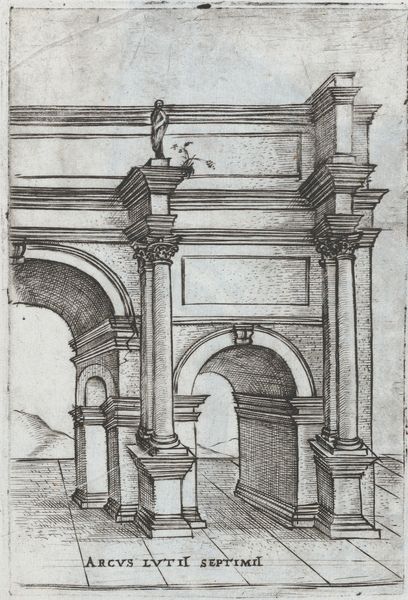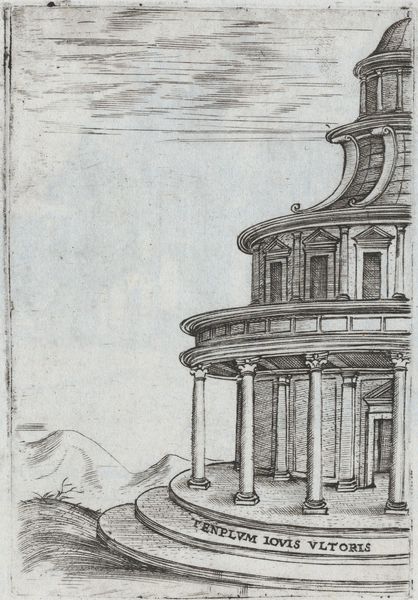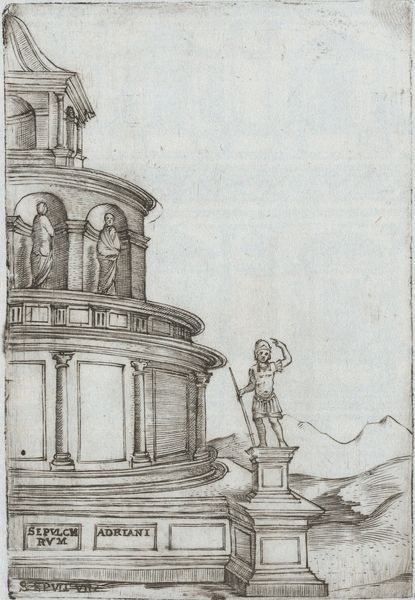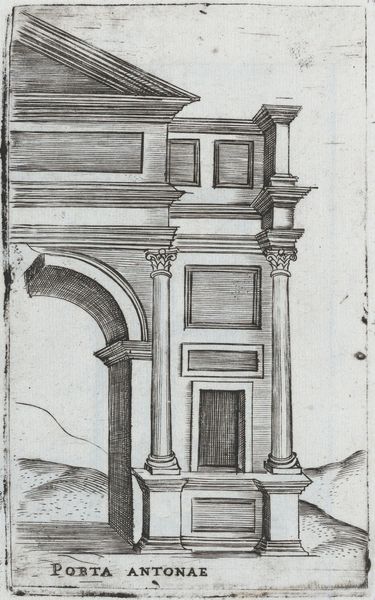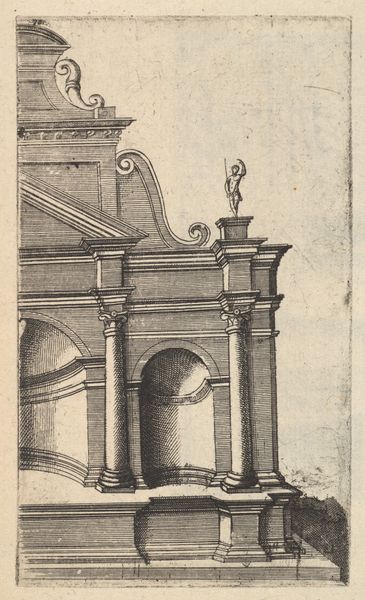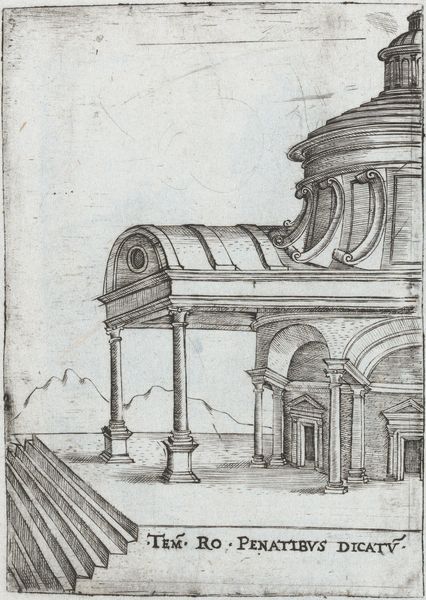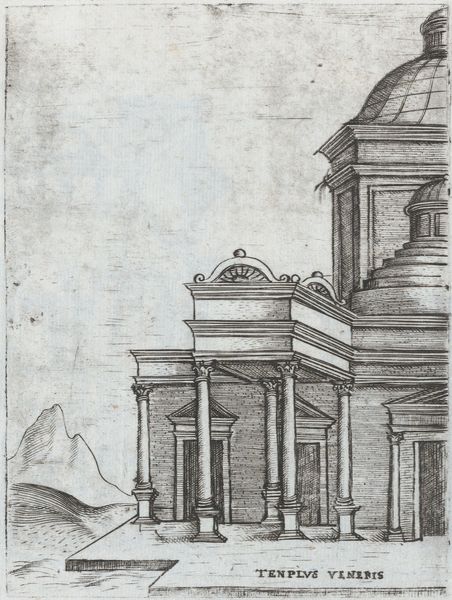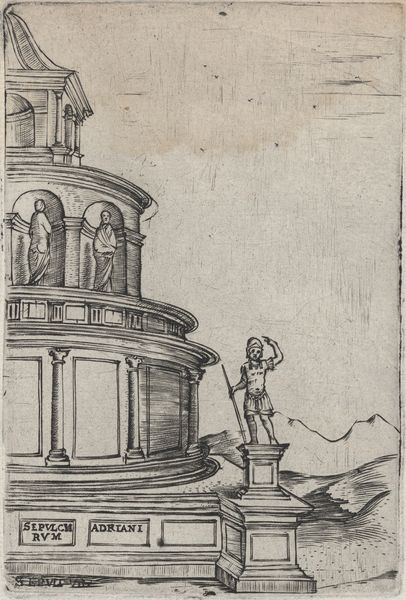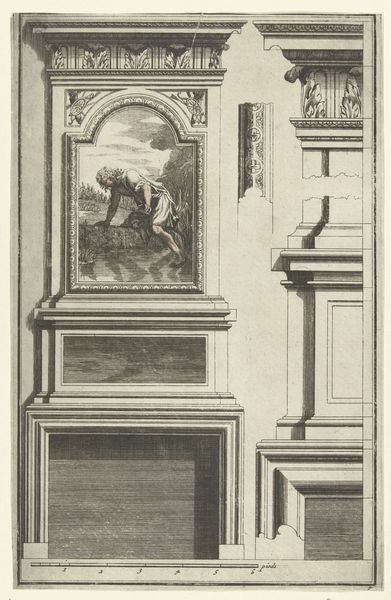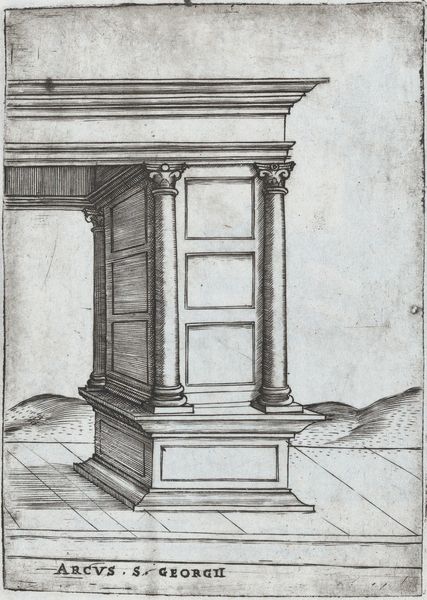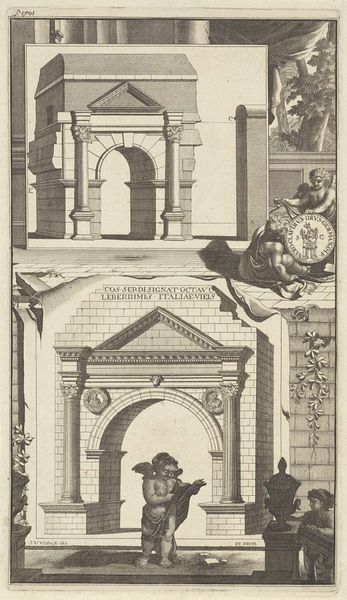
Pantheon Rome, from a Series of Prints depicting (reconstructed) Buildings from Roman Antiquity 1530 - 1550
0:00
0:00
drawing, print, engraving, architecture
#
drawing
# print
#
geometric
#
arch
#
engraving
#
architecture
Dimensions: Plate: 4 1/2 × 6 1/4 in. (11.4 × 15.8 cm) [edges of the plates are not straight, the height varies from 9.5-11.4cm; top right corner is cut off]
Copyright: Public Domain
This print, made sometime around 1535 by the Monogrammist G.A. and the Caltrop, depicts a reconstructed view of the Pantheon in Rome. The artist has used etching to give us a glimpse of what they imagined ancient Roman architecture to look like. During the Renaissance, there was a renewed interest in classical antiquity, shaping artistic production. Artists looked to Roman ruins for inspiration, hoping to recapture the grandeur of the past. This print reflects that fascination. The cool, precise lines give the structure a sense of authority, while the inclusion of a descriptive cartouche adds an element of scholarly documentation. But it also raises questions about the politics of imagery. How accurate were these reconstructions? What biases might have shaped the artist's vision? To fully understand this print, we can consult archaeological records, architectural treatises, and other visual sources. By placing this artwork in its social and institutional context, we gain a deeper understanding of its meaning.
Comments
No comments
Be the first to comment and join the conversation on the ultimate creative platform.


